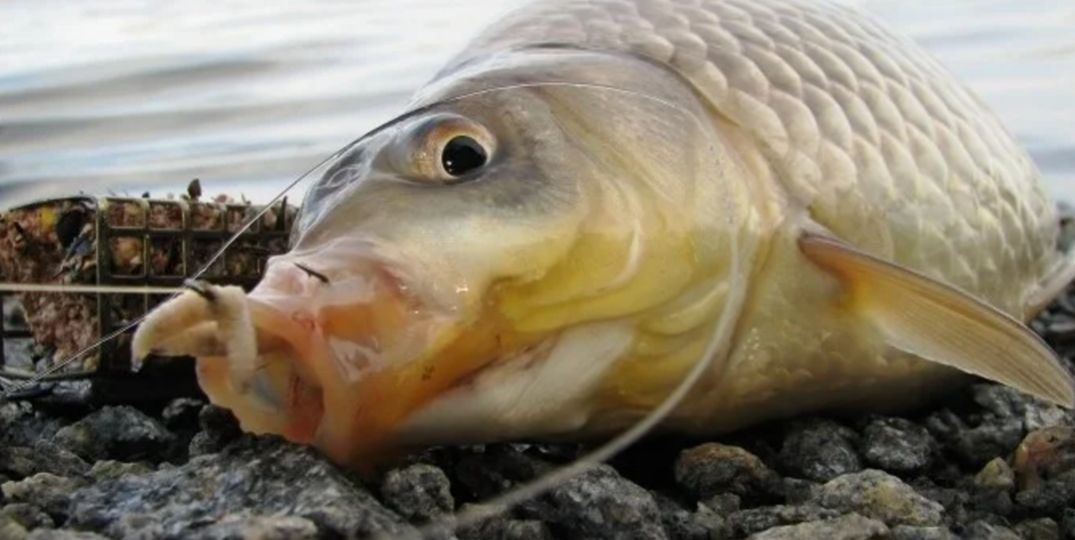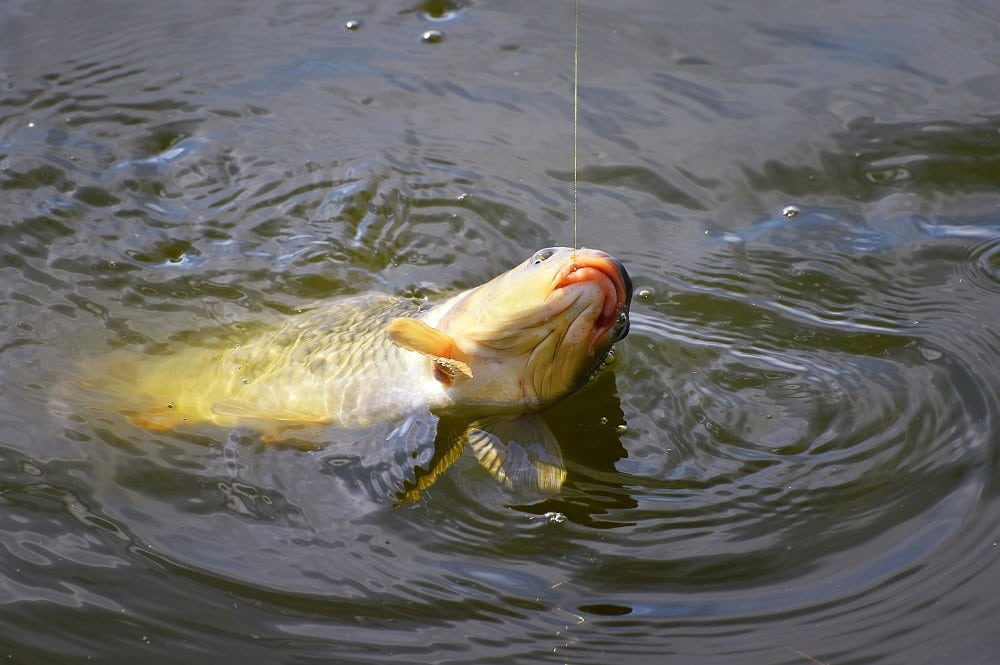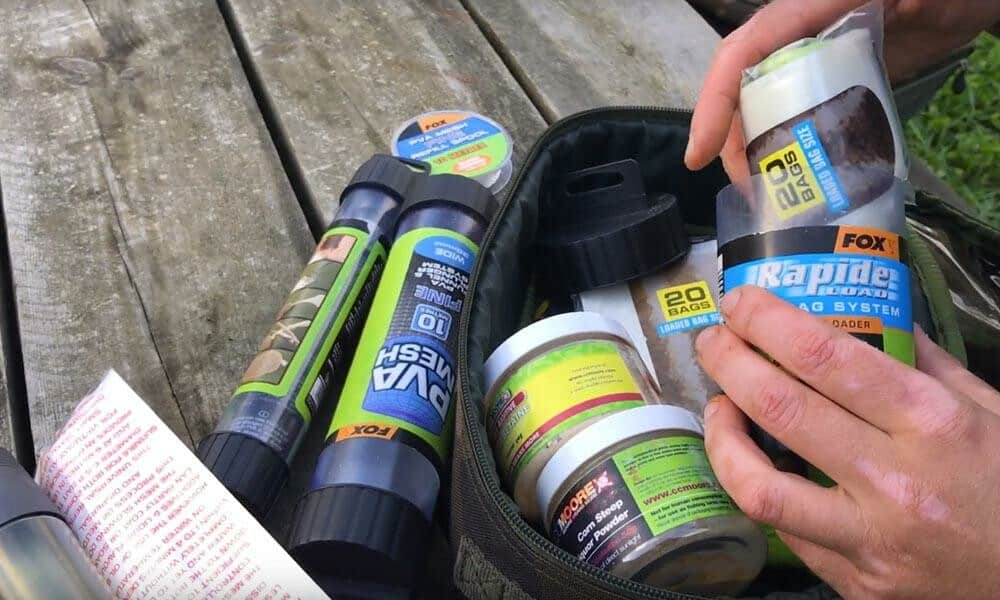A carp leash is one of the main elements of the rig, since it has to withstand the bulk of the entire load, as well as various negative actions that appear during fishing. There will be no high-quality hooking if the leash is chosen thoughtlessly or incorrectly tied when making it yourself. Taking into account the fishing conditions, these carp leads are made of different materials, have different sizes and diameters.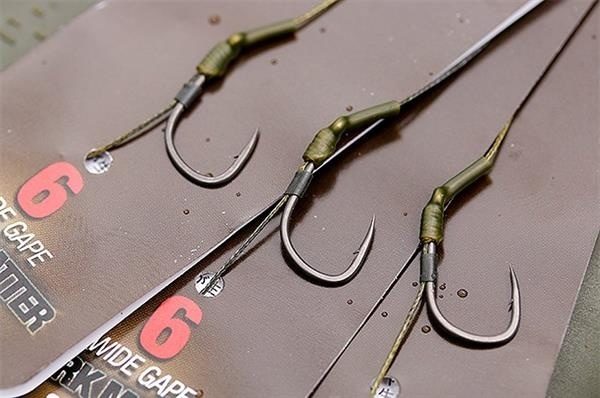
Criterias of choice
When choosing a leash for
carp fishing , the following parameters must be taken into account:
- Elasticity . It is especially relevant when setting light baits for maximum efficiency of the main task of the leashes.
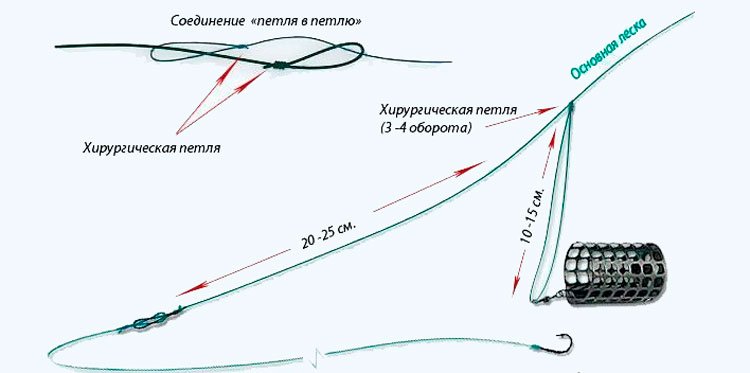
- Durability . It directly depends on this parameter, whether the leash can withstand the carp on the hook.
- Stretching and abrasion resistance . All negative influences should not be reflected on the carp leads.
- Diameter . It is best to choose a medium thickness. If the leash is thick, the breaking load on the line will increase. If it is very thin, the quality of the bait will decrease.
- Color . Green is considered the most optimal, but brown or silver is also often chosen.
Varieties of leash material for carp fishing
Today there are the following types of leashes for carp fishing:
- Neutral . It is convenient to use when playing, and they are also invisible in heavily overgrown ponds. They are not suspicious for carp, as they occupy a neutral position in the required layer of water.
- Pop-up leads are used when you want to hang the bait above the bottom. When fishing in muddy waters, it is recommended to choose wicker materials.
- Hard lead materials are chosen if the fish is accustomed to soft material, as well as if there have been cases of fin cuts. With hard material, it is more difficult for carp to get off the hook. To attach it to the tackle, a “method” loop is applied. This allows the leash to move freely.
- Leashes – invisible from fluorocarbon are advised to choose in transparent reservoirs without vegetation, when the carp has already learned other leashes and sees them. Once frightened, he will not swim to the place of fishing.
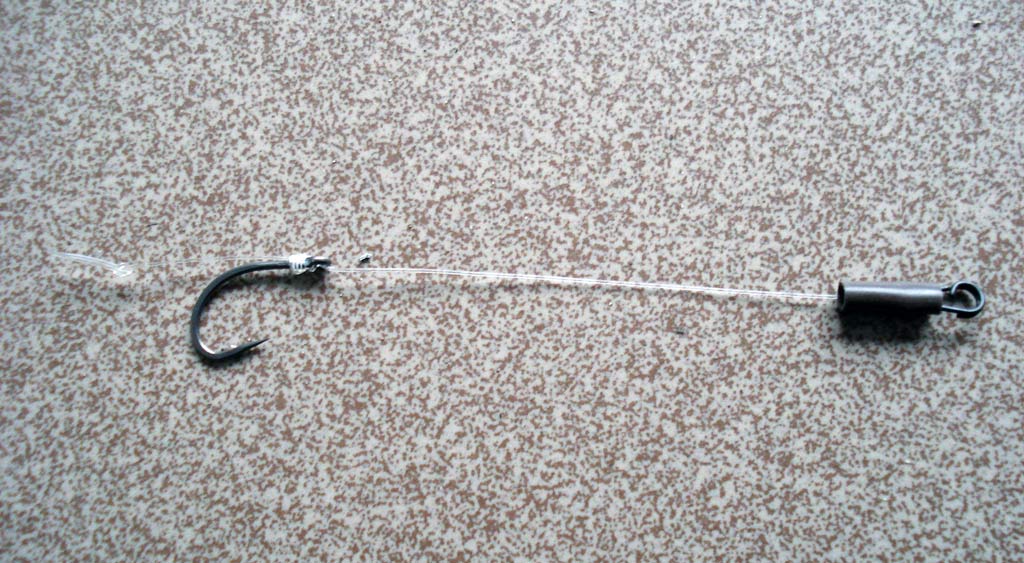
- Sinking during contact with the bottom will be invisible even for very cautious carp, since the leashes match them in color. But they are only suitable for a clean area. If there are irregularities, then flails are likely and the fish, when playing, can simply spit out the hook. Before using these leads, it is best to first examine the bottom.
Carp leash length
During knitting, installation, you need to correctly choose the optimal size of the leash, taking into account the distance of the bait spot, the composition of the bottom and some other parameters:
- Up to 25 cm . Suitable for ponds without strong currents with dense bottoms. At the same time, short leashes are better than others for long distance casts. This way, a piece of lead material will not get tangled with the main line.
- 25-45 cm . The best option for fishing with a feeder rod with casting at medium and long distances. In this case, the type of bottom must be hard, dense, possibly the presence of a small layer of silt. It is advisable to fish on medium-sized leashes in calm ponds or rivers with moderate currents.
- More than 45 cm . Large leashes are used when fishing near the shore or when casting over medium distances. Sections up to 1 meter will be required on ponds where the bottom soil is heavily silted, the presence of a current does not matter.
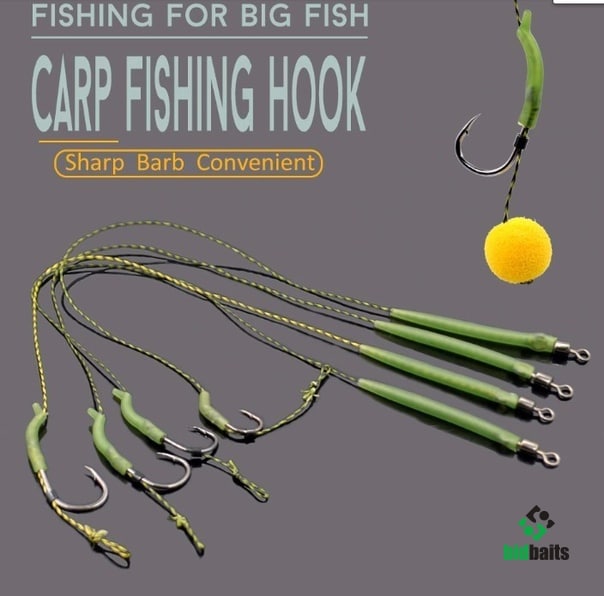
fishing for carp with a feeder rig . The stronger the flow, the longer the length is chosen. This is due to the displacement of the bait spot, in the middle of which the bait must be located. The diameter of the leader is also very important. The smaller the cross section, the less noticeable it will be in water. That is, the rig is not perceived as something foreign, this significantly increases the chance of a bite. However, thin leashes are not as strong as they break more easily.
Installation of the leash, taking into account the material
There are several ways to mount leashes, which differ depending on the selected material. During their manufacture, it is necessary to take into account the presence of algae, features of the bottom, fishing conditions.
From a soft braid
The leash is easy to knit, comes out soft, the bait is delicately presented to the fish. Carp almost does not feel this material when biting. But the hair rig can twist, get tangled during power casts, and has poor cut resistance. The scope of this leash is limited. It is used only in the presence of a dense and clean bottom, where there are no shells, algae, stones and snags.
- pick up the material, tie a loop on it so that the knot is hidden in the bait;
- cut a piece of braid of the required size;
- thread a loop through the boilie, install a stopper;
- fix the bait by threading the stopper from the bottom;
- pass a heat-shrinkable tube (2 mm in thickness) through the leash;
- set the size of the hair, tie a hook;
- determine how the hook engages;
- with excessive tenacity, the knot must be glued;
- equip the leash with a silicone outlet to avoid entanglements;
- tie the leash to the rig.
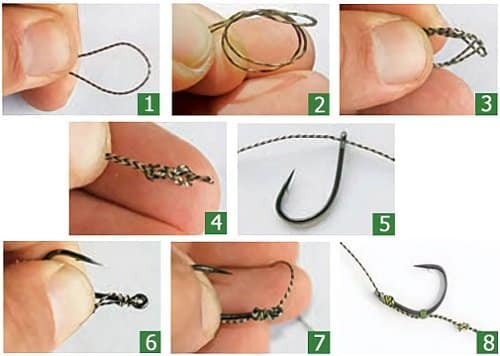
Braided material with protection
In this case, a braided line is used, which is in a plastic sheath to protect the tackle from possible cuts. This equipment is used in snags, on a stone bottom. To prevent the leash from twisting, it must be kept in a stretched state all the time with installation only on rigid tubes. For manufacturing you will need:
- remove the sheath from the material at the site along the length of the hair installation, but first find out the size of the future bait;
- tie a loop;
- cut the cord to the required size, install the boilie ;
- fasten the stopper from below;
- pass the tube through the tip, then onto the hook;
- set the size of the hair tackle;
- fasten the hook;
- process the knot with glue;
- roll up the heat-shrinkable tube, its end must adjoin the tip, thread the drainer or fix the leash on the hook with a swivel, tie it with a ring for a hinged connection;
- fix to the tackle using a “loop in a loop”.
How to tie the simplest leash, see the video: https://youtu.be/2ZFm-ZMuzaE
Fluorocarbon leash
The specificity of this option is the use of materials of different hardness. Part of the rig near the weight is made more rigid with fluorocarbon. The remaining parts are made of soft material. The rigidity of the leash will prevent twisting when diving to the bottom, while reducing the risk of overlaps during casting. However, the fluor is poorly rather rigid, not suitable for all types of carp mounting, and this is a significant drawback.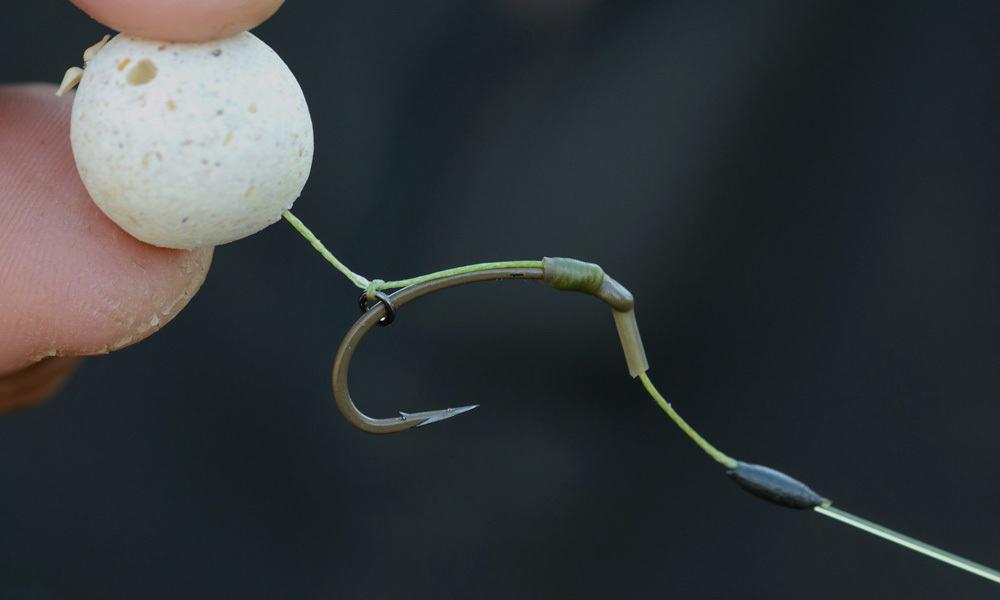
- cut off some of the soft material, tie a loop;
- put on boilie, secure;
- thread a stopper from the bottom of the fishing line;
- tie a metal ring on your hair;
- the hook is threaded into a ring and a knot is tied;
- adjust the location of the ring on the hook, process the knot with glue, if necessary;
- tie the soft and fluorocarbon part of the rig with a knot;
- put on a drainer, tie a loop on the second rigid side;
- glue a piece of soft lead on the site of joining dissimilar materials for reliability.
This will make the leash as reliable as possible. A tackle attached to a metal ring can easily move along the hook. Even while spitting out the bait, the sting sting will slide the ring down and the hook, being free, will pierce the carp’s lip. How to make carp leashes from fluorocarbon – video instruction: https://youtu.be/yTNq2k1mXhc
Fishermen’s recommendations
When knitting carp leashes, certain rules must be followed:
- When tightening the assembly, it must be moistened.
- For reliability, glue the nodes with special glue.
- The tackle must be disguised, suitable for the type of bottom. All installed elements are as reliable as possible, with a high tensile load, while the cross-section of the braid and the size of the swivels must correspond to the dimensions of the trophy.
- It is recommended to start with a simple line during the installation of the leads. Only after getting enough experience to switch to hard materials.
- The snug fit of the rig on the bottom must be tight, without wrinkles and other protrusions.
- Carp are highly susceptible to aromas, so the tackle should be free of foreign odors.
You also need to remember that carp is very shy and, in order to prevent fish from leaving the bait place, it is necessary to keep silence on the shore, use camouflage clothes taking into account the vegetation. Carp will quickly notice unnatural colors.

